Lighting Awards: Innovation & Design
The 19th annual Light & Architecture Design Awards jurors parsed through 50 entries to select 10 winning projects in four categories: whole building, exterior, interior, exhibition and installations.
The honourees range from a history-rich theatre in London to a digitally advanced mall in Wuhan, China, exemplifying lighting design that works in symbiosis with both its surrounding architecture and community.
Whether sensitive to period details, workspace needs, or the latest in sustainable LED technology, this class of winners have made their marks.
Everything that’s been done is subtle to let the architecture sing and the lighting feel original when in fact it’s very much supplemented.

Theatre Royal Drury Lane
When it came to renovating London’s Theatre Royal Drury Lane, a historically protected structure dating to 1810, lighting designers at BPD made honouring the building’s origins their top priority.
After studying 19th-century architect Benjamin Wyatt’s original plans for the theatre, the team worked to recreate period fixtures, scanning an antique lantern to generate 3D prints and molds.
A blacksmith casted modern replicas.
Artisans leaned on historically accurate methods to hand-blow and cut glass lenses.
The project also features some modern touches.
New concealed fixtures help wash ceilings and illuminate artwork, while pendants updated with pencil-thin, narrow beam optics.
They ensure that each seat has adequate light for theatre goers to read a program.
By request of composer Andrew Lloyd Webber, who financed the renovation, the team installed low-level LEDs along the staircase to mimic the appearance of candlelight.
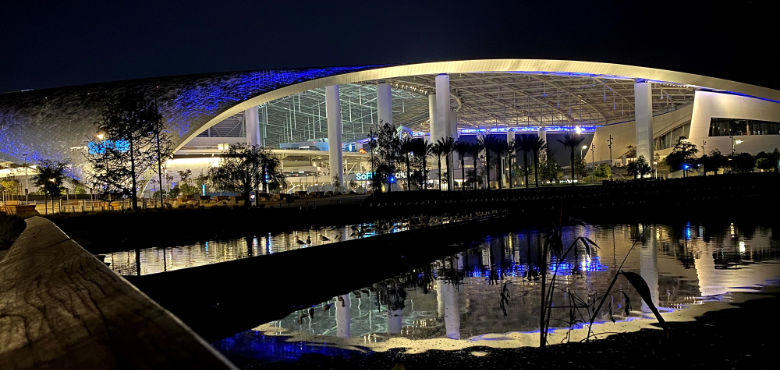
SoFi Stadium
The NFL’s largest venue, SoFi Stadium encompasses a 70,000-seat stadium, a 2.5-acre covered plaza and a 6,000-seat performance space.
Located in Inglewood, California, and designed by Dallas HKS Architects, the stadium relies on a multi pronged lighting scheme that illuminates 3.1 million square feet of indoor-outdoor space.
With lighting by the Cambridge firm Lam Partners, the stadium’s sculptural ETFE roof conceals RGBW fixtures that realise the architect’s vision for a transparent, lantern-like effect.
Exterior ground-mounted LEDs further enhance the curvature of the canopy.
Inside the stadium, which also features work by New York based KGM Architectural Lighting, Lam incorporated more than 1,000 high-quality architectural lighting products that avoid glare while bathing public areas in a bright glow.
Thoughtful strategies, which extend to white plaster walls and concealed uplighting, foster visual comfort and allow spectators to focus on the field while remaining unbothered by a 30,000-pixel LED media mesh on the roof, visible to planes approaching nearby Los Angeles Airport.
It’s a reinvention of, not only the architecture, but the lighting which is so much more sophisticated and successful than the typical large stadium.
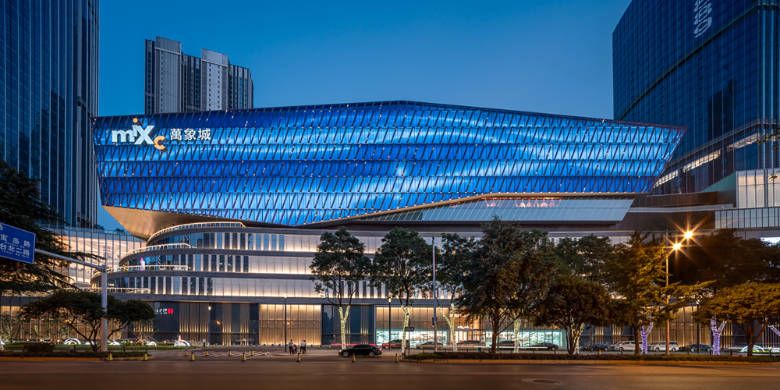
MixedC Shopping Mall
Located in Wuhan, China’s central business district, the approximately 20,451,440-square-foot MixedC Shopping Mall is cocooned in the Crystal Crown: a shimmering, double-skinned façade that creates a striking digital LED display.
With its layers of light and colour, it offers an eye-catching sensory experience, at once attracting shoppers and connecting the center to the vibrant and bustling neighbourhood that surrounds it.
Working closely with Hong Kong–based architect Lead8 and the curtain-wall consultant, Beijing lighting designer Grand Sight Design International developed a scheme relying on the architecture itself: custom distribution lenses and diffusion film bring RGBW full-color light inside the faceted curtain wall, while linear, single-color lights brighten the project’s exposed ribs.
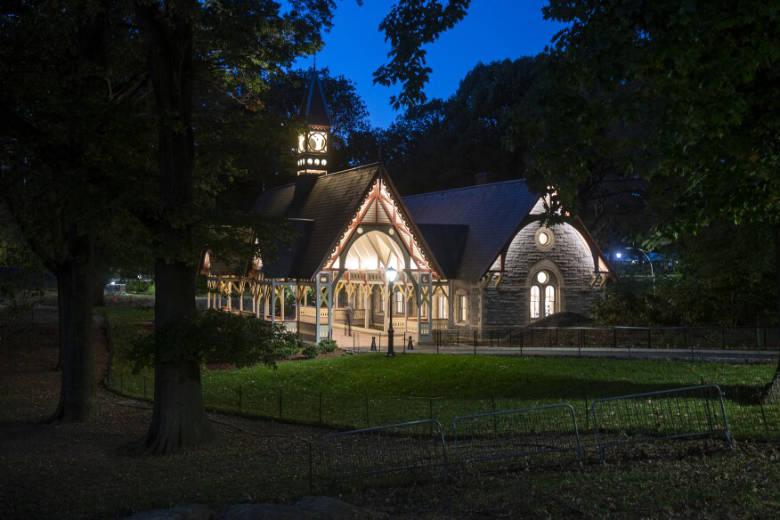
The Dairy
When Cline Bettridge Bernstein Lighting Design signed on to help renovate The Dairy, an 1870 Victorian Gothic cottage in New York’s Central Park, restoring a sense of whimsy to the structure was a primary goal.
To transform the historical building into a fairytale-like focal point come nightfall, the designers called on LED lighting that accentuates the intricate wood detailing.
The team exclusively used lamps that were 3000K, a type of warm light that shows off the cottage’s natural material palette.
They also employed photometric modelling, which empowered them to create renderings that helped the client visualise the placement of the LED fixtures.
The resulting scheme features concealed LED strips, which highlight the structural gables and roof towers.
A dimming system cleverly balances the amount of light on the solid-stone structure’s exterior with the darkness of the park during evenings.
Within the Dairy’s open-air, wood loggia, asymmetric linear lights illuminate the ceiling and downlight cylinders bathe the floor.
The uniformity of the indirect light is so clean. It’s like a little lantern in the woods.
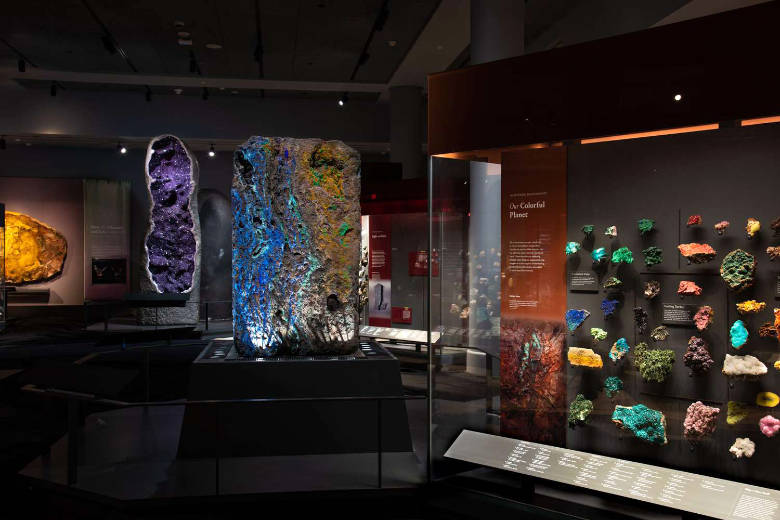
American Museum of Natural History
Completed in 2021, the 11,500-square-foot gem Mineral Gallery at New York’s American Museum of Natural History brings new clarity and focus to each gleaming display.
Davis Brody Bond and Ralph Appelbaum Associates with lighting experts Renfro Design Group conducted extensive studies and building mock-ups to test the latest in LED technology.
This painstaking process ultimately enabled the designers to identify the best fixtures to illuminate the collection, including 5,000 sparklers of varying sizes from 98 countries.
The resulting scheme features three layers of light that allow visitors to examine each piece without the distractions of heavy shadows.
They employed colour-changing perimeter cove lights to create a sense of theatricality and help define the gallery space.
A linear light wash within each display case, ensuring continuity of colour temperature.
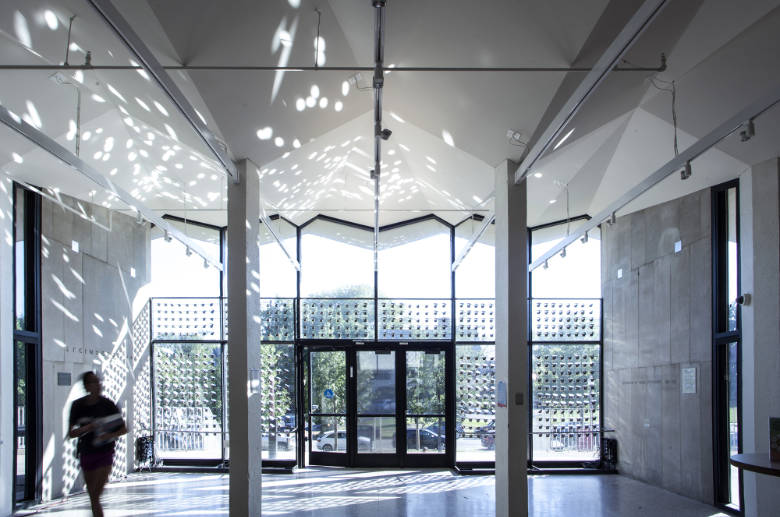
Catoptric Surface
A research project by St. Louisbased Open Source Architecture, the Catoptric Surface is a robotic light reflection system that draws in sunlight and reflects it using a glass wall covered with small, rounded mirrors.
Each custom- fabricated mirror rotates independently and moves at the whimof electric motors and computational software.
Light is directed from the mirrors to the building’s interior, forming spatial images and patterns of daylight.
Each mirror collects the equivalent of one pixel of light.
Each reflection is dictated by the light image that the software receives from the mirror.
When the mirrors rotate to draw in and reflect sunlight, the program reproduces each low- resolution pixel in the building’s interior.
Aside from generating striking visuals, the system is designed for practical use.
Daylight can be focused into specific areas to potentially reduce the load on artificial lighting.
There are really interesting ways of bringing light into buildings that isn’t actually about how well we can see.
